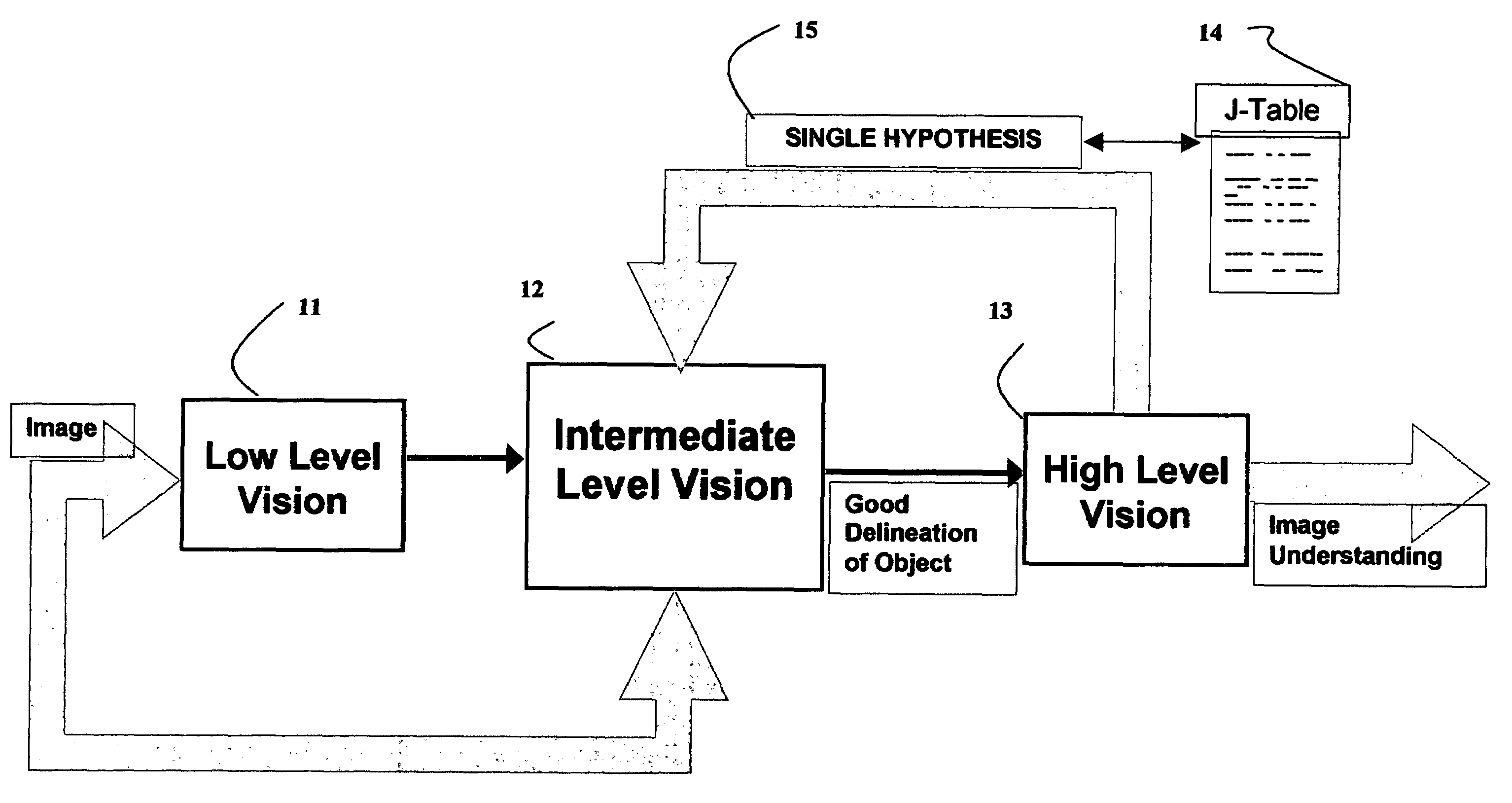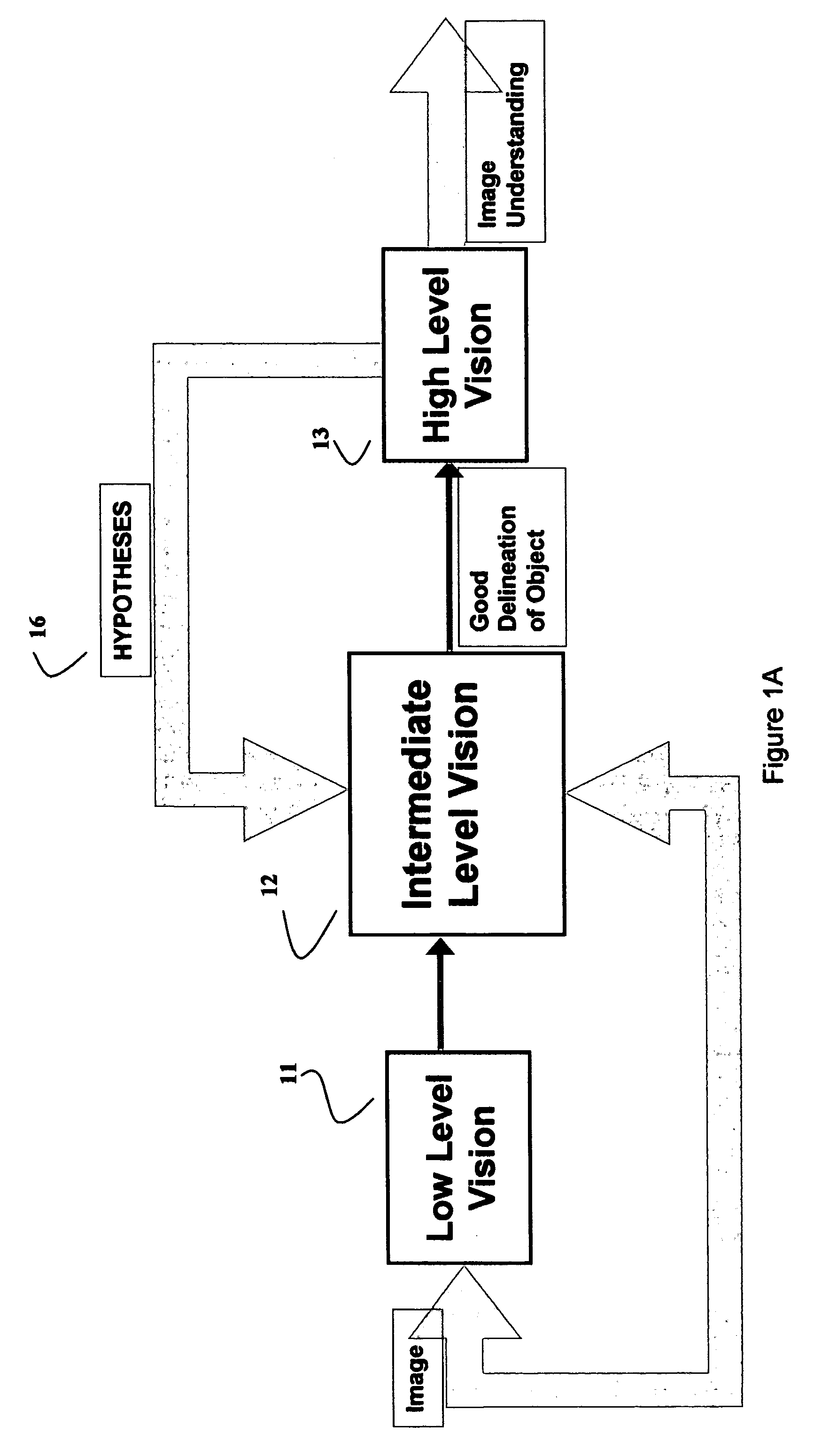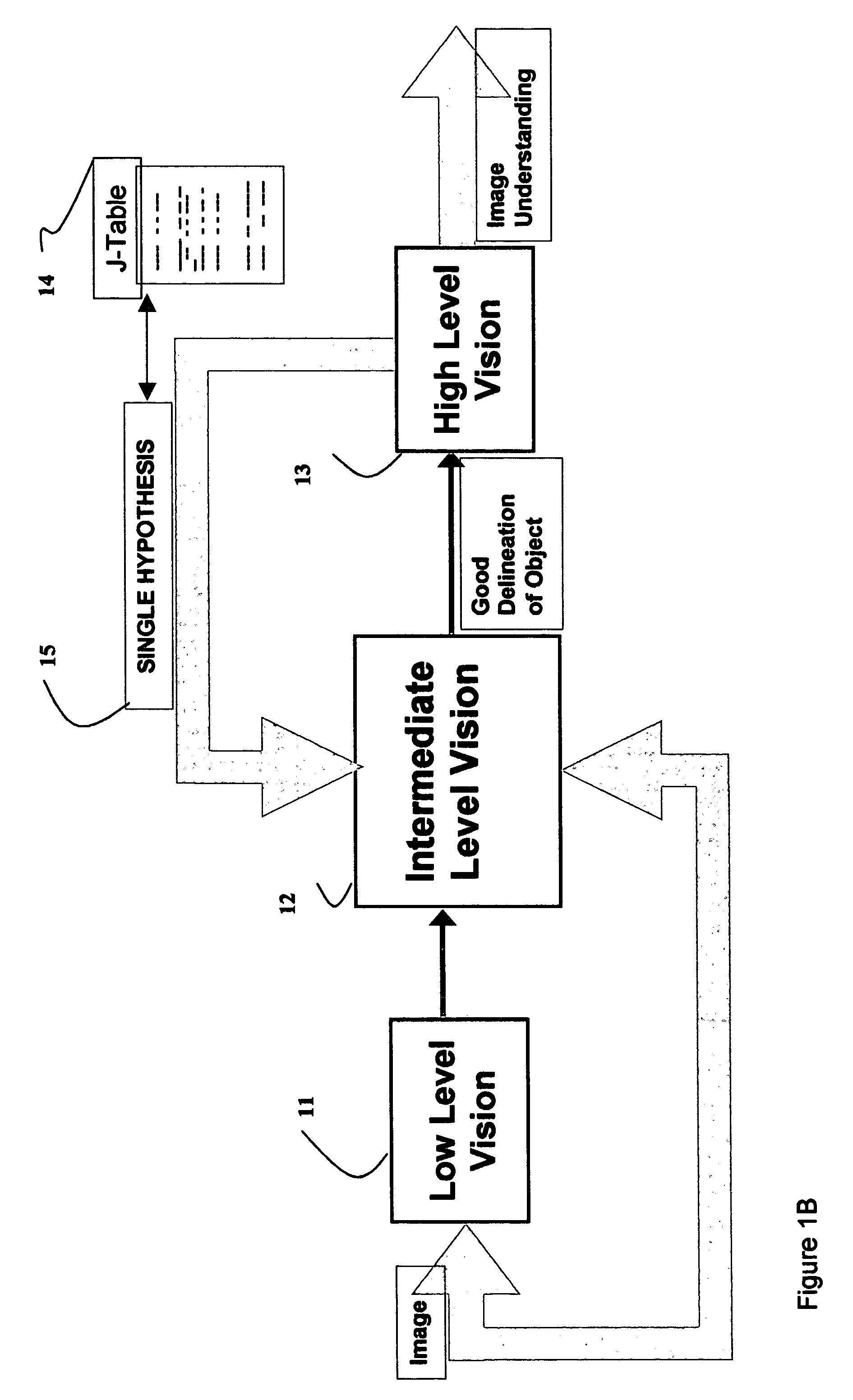Hypothesis support mechanism for mid-level visual pattern recognition
a support mechanism and visual pattern technology, applied in the field of computer vision systems, can solve the problems of high computational complexity of this method, high time and space complexity of methods, and high number of increments, and achieve the effect of eliminating the complexity associated with methods
- Summary
- Abstract
- Description
- Claims
- Application Information
AI Technical Summary
Benefits of technology
Problems solved by technology
Method used
Image
Examples
example —
EXAMPLE—DUALTEST
[0098]The efficiency of the PIHT / IPIHT framework depends on several factors, including: Quality of segmentation, accuracy of gradient determination, and validity of Hough Transform capabilities. To determine if any or all of these factors affect performance of the framework the example described below and in FIG. 6 is provided:
[0099]This example presents an image which contains both the quadrilateral and arbitrary shape, along with other shapes within it. The purpose is to review the ILV implementation's capability of finding one shape, when other shapes are also present in the image. In other words, this can be regarded a synthetic-experimental-example of a real-world image.
[0100]FIG. 6A shows the DUALTEST image along with FIG. 6B illustrating the hypothesis for the arbitrary shape. Note that the desired object for extraction (i.e., arbitrary shape) is rotated and unscaled from its hypothesis.
[0101]A surface plot represents the Hough Parameter Space (HPS) graphicall...
PUM
 Login to View More
Login to View More Abstract
Description
Claims
Application Information
 Login to View More
Login to View More - R&D
- Intellectual Property
- Life Sciences
- Materials
- Tech Scout
- Unparalleled Data Quality
- Higher Quality Content
- 60% Fewer Hallucinations
Browse by: Latest US Patents, China's latest patents, Technical Efficacy Thesaurus, Application Domain, Technology Topic, Popular Technical Reports.
© 2025 PatSnap. All rights reserved.Legal|Privacy policy|Modern Slavery Act Transparency Statement|Sitemap|About US| Contact US: help@patsnap.com



